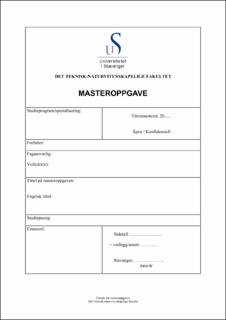| dc.contributor.advisor | Gudmestad, Ove Tobias | |
| dc.contributor.author | Johannessen, Stig Andreas | |
| dc.coverage.spatial | Arktis | en_US |
| dc.date.accessioned | 2020-10-07T08:22:42Z | |
| dc.date.available | 2020-10-07T08:22:42Z | |
| dc.date.issued | 2020-06-15 | |
| dc.identifier.uri | https://hdl.handle.net/11250/2681482 | |
| dc.description | Master's thesis in Risk Management and Societal Safety | en_US |
| dc.description.abstract | The Northern Sea Route is an area that is prone to wicked problems. Wicked problems are problems that are not predefined, nor do they have a single solution. They are problems that exist due to the opinions and wants of the stakeholders in the problem complex.
The first part of Future Risk Scenarios of the Northern Sea Route revolves around operationalizing wicked problems into something analysable. As the problems are subjective, they are non-quantifiable, non-linear, non-delineated problems. One can therefore not use ontic quantities to reduce their epistemic uncertainty. In contrast one can use discrete models that reduce epistemic uncertainty in other ways models such as the general morphological analysis approach.
Following this methodology, the thesis constructs a conceptual space containing the main dimensions that influence the Northern Sea Route, and the corresponding conditions it can take on. Through the process of cross-assessment of the criterion of whether different dimensions’ conditions can coexist. The criterion of pairwise coexistence is constrained by logical, empirical, and normative assessments. Which leaves an interactive inference model in which one can investigate scenarios and scenario clusters that can realistically occur.
By using this interactive inference model, the thesis identifies East/West Relations, Global Environmental Politics, and Technical and Navigational Requirements as the most pivotal dimensions for the formation of sates of affairs. The interplay between the connections in these parameters clearly forms distinct opposing scenario clusters for possible futures. The following discussion therefore delves into how the empirics of these dimensions and contends why they exclude or include specific scenario clusters.
Concluding that East/West Relations determine the stability of the Northern Sea Route for stakeholders, whilst Technical and Navigational Requirements and Global Environmental Politics include and exclude stakeholders on a basis of sociotechnical and local environmental safety concerns. Effectively identifying relations, technology, and environmental politics as the strategic areas to target to shape the future of the Northern Sea Route. | en_US |
| dc.language.iso | eng | en_US |
| dc.publisher | University of Stavanger, Norway | en_US |
| dc.relation.ispartofseries | Masteroppgave/UIS-TN-ISØP/2020; | |
| dc.rights | Navngivelse 4.0 Internasjonal | * |
| dc.rights.uri | http://creativecommons.org/licenses/by/4.0/deed.no | * |
| dc.subject | samfunnssikkerhet | en_US |
| dc.subject | scenario | en_US |
| dc.subject | morphological analysis | en_US |
| dc.subject | uncertainty | en_US |
| dc.subject | risk | en_US |
| dc.subject | northern sea route | en_US |
| dc.title | Future Risk Scenarios of The Northern Sea Route | en_US |
| dc.type | Master thesis | en_US |
| dc.subject.nsi | VDP::Samfunnsvitenskap: 200 | en_US |

